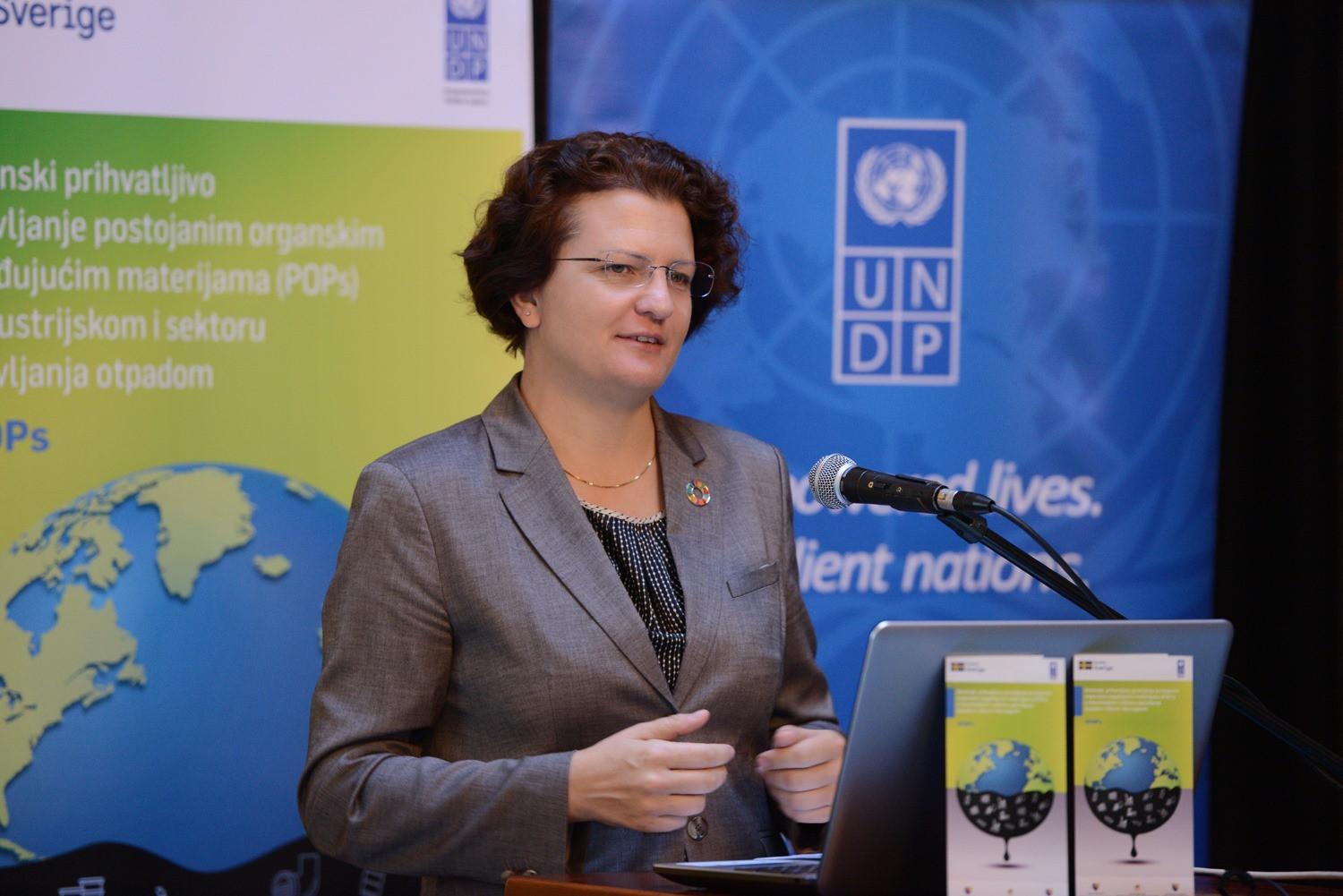Federal cuts to Medicaid, food aid will make low-income seniors in Missouri more vulnerable – Missouri Independent

Report on the Impact of Federal Policies on Senior Welfare in Missouri and Kansas in Relation to Sustainable Development Goals
Executive Summary
Recent federal legislative changes, including significant budget cuts to social safety-net programs, are projected to have a severe negative impact on the growing senior populations in Missouri and Kansas. This report analyzes these impacts through the framework of the United Nations Sustainable Development Goals (SDGs), highlighting significant challenges to achieving SDG 1 (No Poverty), SDG 2 (Zero Hunger), SDG 3 (Good Health and Well-being), SDG 10 (Reduced Inequalities), and SDG 11 (Sustainable Cities and Communities). The reduction in federal funding for Medicaid and the Supplemental Nutrition Assistance Program (SNAP) threatens to exacerbate poverty, food insecurity, and healthcare access issues for a vulnerable demographic, placing immense strain on state and local support systems.
Analysis of Policy Impacts on Sustainable Development Goals
SDG 1 (No Poverty) & SDG 10 (Reduced Inequalities): The Widening Vulnerability of Senior Citizens
Federal economic policies and budget cuts are poised to increase poverty and inequality among older adults, a direct contradiction to the principles of SDG 1 and SDG 10. A significant portion of the senior population in both states already lives with financial precarity, a situation the new policies will likely worsen.
- In Missouri, nearly 10% of residents aged 65 or older live below the poverty level.
- In Kansas, 8.5% of seniors live below the poverty level.
- The combination of cuts to essential services and economic policies that may increase the cost of living disproportionately harms individuals on fixed incomes, deepening inequality for this age group.
- The growing population of older adults means these negative impacts will affect an expanding segment of the community, undermining efforts to ensure economic security for all.
SDG 2 (Zero Hunger): Escalating Food Insecurity
The goal of achieving Zero Hunger is severely threatened by a $300 billion reduction in funding for the Supplemental Nutrition Assistance Program (SNAP). This cut is projected to remove or reduce food assistance for an estimated 22 million households nationwide, with a direct impact on food-insecure seniors in the region.
- In Missouri, 22% of the senior population currently receives food assistance, indicating a high reliance on programs like SNAP.
- A recent survey of older Missourians found that at least three in ten could not afford healthy meals.
- Community-based organizations, including food pantries and meal delivery services like those provided by KC Shepherd’s Center, are already struggling to meet current demand and face further strain from cuts to federal food aid and increased need.
SDG 3 (Good Health and Well-being): Compromised Healthcare Access and Infrastructure
A proposed $911 billion cut to Medicaid spending over the next decade presents a critical threat to SDG 3 by dismantling foundational support for senior health. The cuts will affect individuals and the entire healthcare ecosystem that serves them.
- Safety-Net Providers: Federally qualified health clinics like Swope Health and safety-net hospitals like University Health, which rely heavily on Medicaid revenue, anticipate significant financial losses. This will likely increase the number of patients requiring uncompensated care and could curtail vital infrastructure projects, such as Swope Health Village’s senior housing and health clinics.
- Long-Term Care Facilities: Nursing homes, where Medicaid covers 65% of residents in Missouri and 58% in Kansas, face immense financial pressure. A new federal rule shortening the Medicaid application processing window from 90 to 60 days may force facilities to absorb costs for residents awaiting approval, potentially leading to closures, particularly in rural areas.
- Access to Care: New work requirements and more frequent eligibility checks for Medicaid could create insurmountable barriers for many seniors, resulting in loss of coverage. Nearly one-third of older Missourians already report an inability to access needed healthcare due to cost or provider shortages.
SDG 11 (Sustainable Cities and Communities): The Housing and Services Crisis
The goal of creating inclusive and sustainable communities is challenged by a growing crisis in affordable housing and essential support services for seniors. Federal funding cuts exacerbate an already insufficient infrastructure.
- Homelessness: Adults aged 50 and older represent the fastest-growing segment of the homeless population, a trend projected to triple by 2030.
- Affordable Housing: There is a critical shortage of affordable housing for seniors. Projects designed to address this, like Swope Health’s planned 200-unit development, are now at risk of being curtailed or delayed due to funding uncertainties.
- Community Support: Funding has been slashed for programs like Meals on Wheels and transportation services that are vital for helping seniors age in place, access medical care, and buy groceries.
State and Local Responses and Institutional Challenges (SDG 16)
State-Level Planning Amidst Fiscal Constraints
In response to the demographic shift, both Missouri and Kansas have initiated strategic planning to address the needs of their aging populations. Missouri is developing a “master plan on aging,” and Kansas has drafted a “state plan on aging.” However, the effectiveness of these plans, a key component of strong institutions under SDG 16, is in jeopardy.
- Federal policy shifts the financial burden of Medicaid and SNAP to the states, which may lack the revenue to cover the costs, especially after recent state-level tax cuts in Missouri.
- A significant “disconnect” exists between the identified needs of seniors and the political and fiscal willingness to fund necessary services.
Local Government and Community Efforts
Local communities are increasingly shouldering the responsibility for senior services. In Jackson County, voters approved a tax levy to raise $8 million annually for senior support. While this demonstrates local commitment, advocates fear that state-level efforts to limit property taxes could threaten this crucial funding source. Organizations like Swope Health continue to innovate with programs such as PACE KC, which provides integrated health and social support, but such programs cannot meet the scale of the growing need alone.
Conclusion and Outlook
The impending federal budget cuts represent a significant regression from the objectives outlined in the Sustainable Development Goals. For seniors in Missouri and Kansas, these policies are expected to lead to increased poverty, hunger, homelessness, and diminished health outcomes. While state and local entities are attempting to formulate responses, they face overwhelming fiscal and political headwinds. Stakeholders express grave concern that the existing crisis in senior services will intensify, and they hold out hope that policymakers will reconsider the cuts before their full, detrimental impact is realized. The situation underscores the critical role of a robust federal safety net in achieving a sustainable and equitable future for all citizens, particularly the most vulnerable.
1. Which SDGs are addressed or connected to the issues highlighted in the article?
The article discusses several interconnected challenges faced by the aging population in Missouri and Kansas, primarily driven by proposed federal cuts to social safety-net programs. These issues directly relate to several Sustainable Development Goals (SDGs).
-
SDG 1: No Poverty
The article explicitly addresses poverty among senior citizens. It highlights that many older adults live on fixed incomes and are financially vulnerable. The discussion centers on how cuts to federal programs will exacerbate poverty for this demographic.
-
SDG 2: Zero Hunger
Food insecurity is a major theme. The article details concerns over cuts to the Supplemental Nutrition Assistance Program (SNAP) and the struggles of food pantries and meal service providers like KC Shepherd’s Center to meet the growing demand from food-insecure seniors.
-
SDG 3: Good Health and Well-being
This is a central focus of the article. It extensively covers the potential impact of federal cuts to Medicaid on seniors’ access to healthcare, the financial stability of hospitals and long-term care facilities, and the ability of community health clinics to provide services.
-
SDG 10: Reduced Inequalities
The article underscores the disproportionate impact of economic policies and budget cuts on a specific vulnerable group: older adults. It points out that seniors, especially those with low or fixed incomes, are hurt the most, highlighting an issue of inequality based on age and economic status.
-
SDG 11: Sustainable Cities and Communities
The need for adequate and affordable housing for seniors is discussed. The article mentions the growing rate of homelessness among older adults and describes a specific project, Swope Health Village, aimed at providing senior affordable housing.
2. What specific targets under those SDGs can be identified based on the article’s content?
Based on the specific issues raised, the following SDG targets are relevant:
-
SDG 1: No Poverty
- Target 1.2: By 2030, reduce at least by half the proportion of men, women and children of all ages living in poverty in all its dimensions according to national definitions. The article directly addresses this by citing the percentage of seniors living below the poverty level in Missouri and Kansas.
- Target 1.3: Implement nationally appropriate social protection systems and measures for all, including floors, and by 2030 achieve substantial coverage of the poor and the vulnerable. The article’s focus on cuts to Medicaid, SNAP, and other safety-net services directly relates to the implementation and funding of these social protection systems for the vulnerable senior population.
-
SDG 2: Zero Hunger
- Target 2.1: By 2030, end hunger and ensure access by all people, in particular the poor and people in vulnerable situations… to safe, nutritious and sufficient food all year round. The article highlights the threat to this target, mentioning that proposed cuts could cause “22 million households to lose all or part of their food assistance” and that many seniors already lack money for healthy meals.
-
SDG 3: Good Health and Well-being
- Target 3.8: Achieve universal health coverage, including financial risk protection, access to quality essential health-care services… for all. The discussion on Medicaid cuts, which threatens health insurance coverage for millions and strains healthcare providers, directly pertains to this target. The article notes that “almost one-third of respondents [older Missourians] couldn’t access the health care they needed, often because it cost too much.”
-
SDG 10: Reduced Inequalities
- Target 10.2: By 2030, empower and promote the social, economic and political inclusion of all, irrespective of age… or economic or other status. The article’s central argument is that recent policies will disproportionately harm older adults, undermining their economic security and social well-being. Dr. Singleton’s quote, “Everything has ramifications on aging individuals, and those individuals who are on fixed incomes get hurt the worst,” encapsulates this issue.
-
SDG 11: Sustainable Cities and Communities
- Target 11.1: By 2030, ensure access for all to adequate, safe and affordable housing and basic services. The article identifies a “growing need” for affordable housing for seniors and points to the alarming prediction that the homeless population of adults 50 or older “will triple in size by 2030.” The plan for Swope Health Village to include “200 units of senior affordable housing” is a direct response to this need.
3. Are there any indicators mentioned or implied in the article that can be used to measure progress towards the identified targets?
The article provides several quantitative and qualitative indicators that can be used to measure the status and progress related to the identified targets.
-
For SDG 1 (No Poverty)
- Indicator for Target 1.2: The proportion of the senior population living below the poverty level. The article provides specific data: “In Missouri, almost 10% of the state’s 1.1 million residents 65 years old or older live below the poverty level” and “In Kansas, 8.5% of the state’s 510,000 seniors live below the poverty level.”
-
For SDG 2 (Zero Hunger)
- Indicator for Target 2.1: The prevalence of food insecurity and reliance on food assistance. The article states that in Missouri, “22% [of seniors] receive food assistance” and a survey found “at least three in 10 said they didn’t have enough money to afford healthy meals.” The projected number of households losing SNAP benefits (“22 million households”) is another key indicator.
-
For SDG 3 (Good Health and Well-being)
- Indicator for Target 3.8: The proportion of the population with access to essential health services and public health coverage. The article indicates that “almost one-third of respondents [older Missourians] couldn’t access the health care they needed.” It also provides data on reliance on public funding for long-term care: “Medicaid covers 65% of residents in Missouri nursing homes and 58% in Kansas nursing homes.”
-
For SDG 10 (Reduced Inequalities)
- Indicator for Target 10.2: While not a formal UN indicator, the article uses the specific poverty rates, food insecurity levels, and lack of healthcare access among the elderly population as de facto indicators of inequality when compared to the general population or against a baseline of well-being. The entire narrative serves as a qualitative indicator of policies negatively impacting a specific age group.
-
For SDG 11 (Sustainable Cities and Communities)
- Indicator for Target 11.1: The proportion of the urban population living in inadequate housing or experiencing homelessness. The article cites a stark indicator: “people 50 years or older represent the fastest-growing group experiencing homelessness,” with a prediction that “that group will triple in size by 2030.” The creation of new affordable housing units, such as the planned “200 units of senior affordable housing” at Swope Health Village, serves as a progress indicator.
4. Table of SDGs, Targets, and Indicators
| SDGs | Targets | Indicators Identified in the Article |
|---|---|---|
| SDG 1: No Poverty | 1.2: Reduce poverty in all its dimensions.
1.3: Implement social protection systems. |
Proportion of seniors living below the poverty level (10% in Missouri, 8.5% in Kansas).
Reliance on and proposed cuts to social protection systems like Medicaid and SNAP. |
| SDG 2: Zero Hunger | 2.1: End hunger and ensure access to food for all, especially the vulnerable. | Proportion of seniors receiving food assistance (22% in Missouri).
Proportion of seniors unable to afford healthy meals (3 in 10 in Missouri). Number of households projected to lose SNAP benefits (22 million). |
| SDG 3: Good Health and Well-being | 3.8: Achieve universal health coverage, including financial risk protection and access to quality essential health-care services. | Proportion of older adults unable to access needed healthcare due to cost (almost one-third in Missouri).
Proportion of nursing home residents covered by Medicaid (65% in Missouri, 58% in Kansas). Number of counties without a skilled nursing home (nine in Kansas). |
| SDG 10: Reduced Inequalities | 10.2: Promote social, economic, and political inclusion of all, irrespective of age or economic status. | Qualitative analysis that seniors on fixed incomes are “hurt the worst” by economic policies and budget cuts, indicating a disproportionate negative impact based on age and economic status. |
| SDG 11: Sustainable Cities and Communities | 11.1: Ensure access for all to adequate, safe and affordable housing and basic services. | Trend in homelessness among older adults (fastest-growing group, predicted to triple by 2030).
Creation of new affordable housing units for seniors (e.g., 200 units planned for Swope Health Village). |
Source: thebeaconnews.org

What is Your Reaction?
 Like
0
Like
0
 Dislike
0
Dislike
0
 Love
0
Love
0
 Funny
0
Funny
0
 Angry
0
Angry
0
 Sad
0
Sad
0
 Wow
0
Wow
0















































































